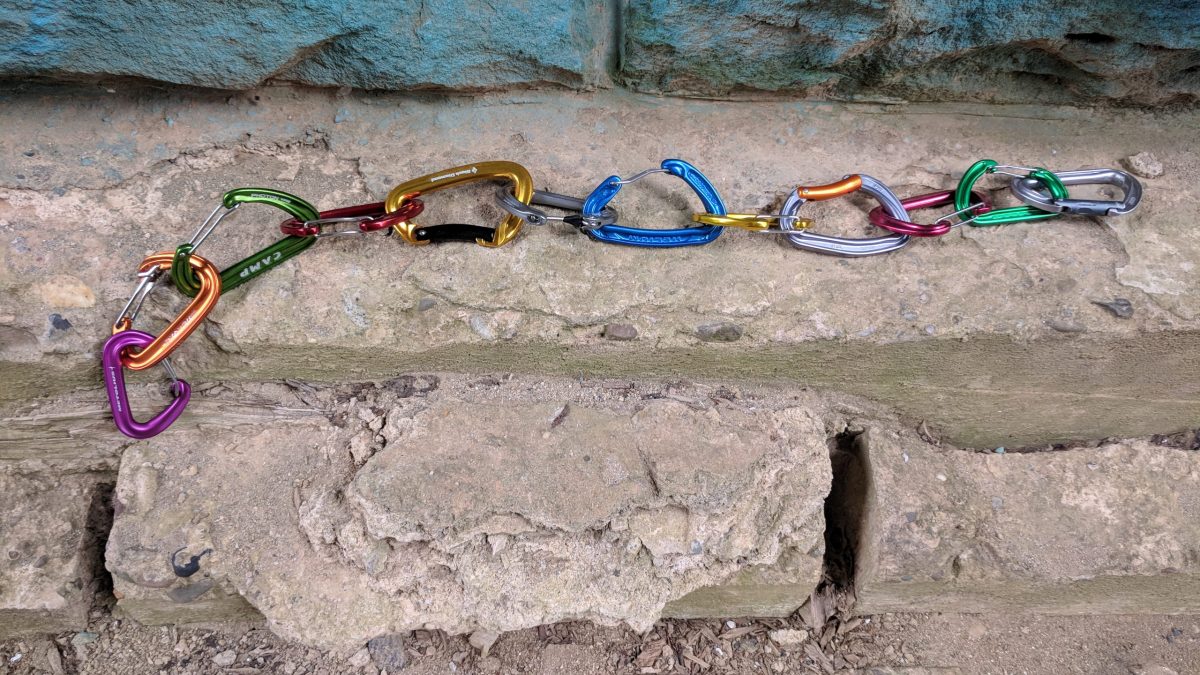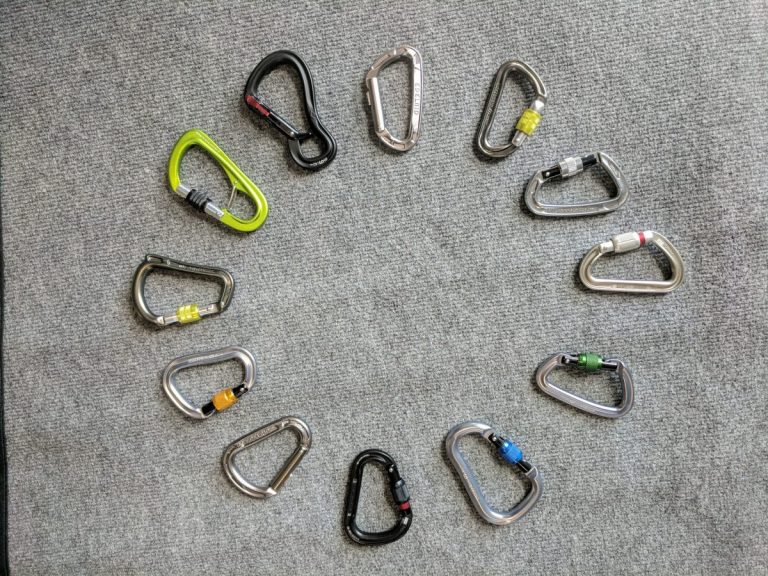Best NON LOCKING CARABINERS 2024
Introduction
As a climber or outdoor enthusiast, you understand the importance of having the right gear. Carabiners are a crucial piece of equipment, and while there are many locking carabiners on the market, non-locking carabiners have their place in your gear collection. In this article, we’ll discuss the importance and benefits of non-locking carabiners, various types, and our top 5 picks. So, buckle up and let’s dive right in!
The Importance of Non-Locking Carabiners
Quick access and easy use
One of the main advantages of non-locking carabiners is their quick access and ease of use. You don’t need to spend time locking and unlocking the carabiner, making them perfect for situations where speed is essential. They also reduce the risk of user error, like forgetting to lock a carabiner.
Weight and bulk considerations
Non-locking carabiners are generally lighter and less bulky than their locking counterparts. This weight difference might seem trivial, but when you’re climbing or carrying gear over long distances, every ounce counts.
Various applications
From climbing to backpacking, non-locking carabiners have a wide range of uses. They’re ideal for clipping gear to your harness, attaching a water bottle to your backpack, or creating quickdraws.
Types of Non-Locking Carabiners
Wiregate carabiners
Wiregate carabiners feature a wire loop as the gate mechanism, making them lightweight and less prone to freezing in cold conditions. They’re also less likely to suffer from “gate flutter,” a phenomenon that occurs when a carabiner’s gate momentarily opens during a fall.
Solid gate carabiners
These carabiners have a solid metal gate that offers a more durable and smooth clipping experience. Solid gate carabiners are more prone to gate flutter and freezing, but they are still widely used due to their reliability and durability.
Bent gate carabiners
Bent gate carabiners have a curved gate, designed to facilitate easier rope clipping. These are often used for the rope-end of a quickdraw, making them popular among sport climbers.
Straight gate carabiners
With a straight gate, these carabiners provide a secure and simple connection. They’re commonly used for the bolt-end of quickdraws or racking gear, offering a smooth and reliable option for various climbing scenarios.
Top 5 Non-Locking Carabiners
Black Diamond Positron
The Black Diamond Positron is a versatile and lightweight carabiner suitable for various climbing applications. With a smooth-clipping keylock nose design, it eliminates the risk of snagging on gear or bolts. The Positron is available in both straight and bent gate versions, allowing you to create the perfect quickdraw setup.
Petzl Spirit
The Petzl Spirit is a high-quality, lightweight carabiner that excels in sport climbing. With a hinged gate design, the Spirit allows for easy clipping and a smooth rope glide. Its keylock nose design prevents snagging, and the durable construction ensures long-lasting performance.
DMM Alpha Light
The DMM Alpha Light is a lightweight wiregate carabiner with a clean, ergonomic design. Its large gate opening and deep basket make clipping a breeze, while the lightweight I-Beam construction reduces overall weight. The Alpha Light is an excellent option for alpine climbing or any situation where weight is a concern.
CAMP Photon Wire
The CAMP Photon Wire is the lightest full-size carabiner on the market, making it an ideal choice for weight-conscious climbers. Despite its minimal weight, the Photon Wire maintains impressive strength and durability. Its wiregate design reduces gate flutter and freezing, while the keylock nose ensures smooth clipping.
Metolius Bravo II
The Metolius Bravo II is a compact, lightweight carabiner with a large gate opening for easy clipping. Its forged construction offers excellent strength-to-weight ratio, and the flared nose profile helps prevent accidental gate openings. The Bravo II is a great choice for sport or trad climbing.
Factors to Consider when Choosing a Non-Locking Carabiner
Weight
Lighter carabiners are ideal for long climbs or weight-sensitive activities like alpine climbing. However, lighter models may sacrifice durability or strength, so consider your specific needs when selecting a carabiner.
Gate opening size
A larger gate opening makes clipping easier, which can be especially helpful during challenging climbs or for climbers with larger hands.
Strength
Carabiners have strength ratings for three different directions: major axis, minor axis, and gate open. Ensure the carabiner you choose has adequate strength ratings for your intended use.
Price
While price shouldn’t be the only factor, it’s essential to find a balance between affordability and quality.
Brand reputation
Choose a reputable brand with a history of producing reliable and high-quality climbing gear.
Tips for Proper Non-Locking Carabiner Usage
- Inspect your carabiners regularly for signs of wear or damage.
- Clean and lubricate your carabiners to ensure smooth operation.
- Replace carabiners that show signs of significant wear or have been subjected to extreme forces during a fall.
Conclusion
Non-locking carabiners are an essential piece of climbing and outdoor equipment. Understanding the different types, along with their benefits and applications, will help you make an informed decision when choosing the best non-locking carabiners for your needs. With options like the Black Diamond Positron, Petzl Spirit, DMM Alpha Light, CAMP Photon Wire, and Metolius Bravo II, you’re sure to find the perfect fit for your next adventure.
FAQs
- Can I use non-locking carabiners for belaying or rappelling? No, always use locking carabiners for belaying or rappelling to ensure safety.
- How often should I replace my carabiners? There is no specific timeframe for replacing carabiners, as it depends on usage and wear. Regularly inspect your carabiners and replace them if they show signs of significant wear or have been subjected to extreme forces during a fall.
- Can non-locking carabiners be used for hammock setups? Yes, non-locking carabiners are suitable for hammock setups, as long as they have adequate strength ratings for the weight they will support.
- Are non-locking carabiners suitable for all types of climbing? Non-locking carabiners are versatile and can be used in various climbing disciplines, such as sport, trad, and alpine climbing. However, for specific tasks like belaying or rappelling, always use locking carabiners.
- How do I maintain my non-locking carabiners? Regular cleaning and lubrication are essential for maintaining smooth operation and prolonging the life of your carabiners. Additionally, store them in a dry place away from direct sunlight and chemicals that may cause corrosion.

